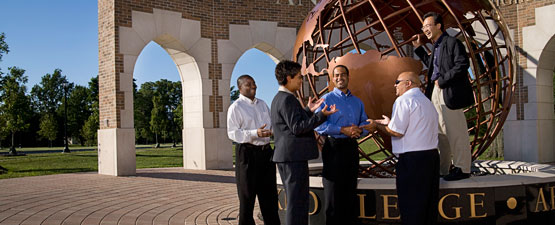Professional Dissertations DMin
Date of Award
2014
Document Type
Project Report
Degree Name
Doctor of Ministry
College
Seventh-day Adventist Theological Seminary
Program
Doctor of Ministry DMin
First Advisor
Ron du Preez
Second Advisor
Eduard Schmidt
Third Advisor
Marc Woodson
Abstract
Problem. The Muskegon, Michigan Seventh-day Adventist Church’s mission statement encouraged members to use their spiritual gifts. Unfortunately, most members with the gift of evangelism did not know how to conduct lay evangelism relying rather on conference evangelists. Due to Michigan Conference staff reductions, in going from four to two full time evangelists with associated budget limitations; there was a waiting list for conference evangelists to hold meetings in the churches, which made the situation more desperate. The result was that laity, who possessed the gift of evangelism, were awaiting conference evangelists rather than conducting their own lay evangelistic meetings. A major contributing factor was the lack of lay members who had been trained to conduct public evangelistic meetings. This study project seeks to address this challenge by conducting a lay training program in evangelism at the Muskegon Seventh-day Adventist Church.
Method. The project sought to equip local leaders for evangelistic ministry in the context of small groups, so that they would conduct their own evangelistic meetings throughout West Michigan. The equipping process went throughout the winter of 2010–2011. Members were equipped in the utilization of several resources including Dr. Russell Burrill’s Field Evangelism manual. Upon completing the training course, each of the five teams conducted their own respective evangelistic campaigns. Opening in five locations throughout West Michigan, the meetings began simultaneously on the evening of February 22, 2011. A qualitative evaluation on the training and the success of these Muskegon meetings was done with focus groups in July of 2011.
Results. The theological foundations in leadership theory arise primarily from my investigation of the lives of Barnabas and also Paul and Jesus. Thirteen practices were discovered and integrated in the training process. These 13 Biblical principles, hereby referred to as the “applied principles” are highlighted: (a) choose loyal leaders; (b) choose encouragement leaders; (c) give leaders an unconditional opportunity (d) choose leaders who are transparent Christians (e) choose leaders who are willing to learn from failure; (f) choose leaders who can deal with conflict and resolution; (g) choose some leaders by following the principle of multiplication; (h) choose leaders who want to develop their Spiritual gift of evangelism; (i) choose leaders by being gender inclusive (j) choose leaders who are willing to learn discipleship; (k) teach leaders to use the principle of oikos evangelism; (l) choose leaders who will use compassion to lead to mission and (m) choose self-sacrificing laity to preach. As to secular leadership theory, the ones that were employed in this project included; influence theory, University of Iowa behavior theory, Ohio State University behavior theory, Path-Goal theory, charismatic leadership and servant leadership. Drath’s (2001) principle of interpersonal Influence did have a positive effect. Also, in the University of Iowa study, various styles proved effective rather than a “one-style to fit all” approach. In the Ohio study theory, the two behavior traits were “consideration” and “initiating structure” and this theory did prove conclusive. Another theory, the Path-Goal theory, also proved conclusive in this project. The focus was to remove barriers as much as I could so that the “path” was clear for the speakers. Charismatic leadership also played a role by my aspiring to the dreams and goals of the speakers to encourage them forward. The most conclusive was servant leadership and its focus on teaching the people to follow Jesus and to make disciples. Furthermore, speakers of both ordinary and those of less favorable backgrounds became spirit filled and used the gift of evangelism to conduct their meetings and taught others about Jesus.
Conclusions. Anyone who is going to train lay leaders needs to be careful in the following areas: Developing, recruiting, discipling, equipping, training, budgeting and planning, scheduling, vision casting, fund raising, encouraging and leading. As a result of this study and the application of these principles, we have concluded the following: The methodologies in this project can effectively train lay people to use their gifts of evangelism; also, when church members are effectively trained to use their gift of evangelism, it will energize the church; also, by a church having an evangelism equipping program, members may utilize such a training school as a place for them to employ their spiritual gifts. In conclusion, the Muskegon Seventh-day Adventist Church is a stronger church today in that it has additional trained laity to do evangelism. As a result of the project, the 17 lay leaders have become stronger speakers and leaders in the church. They all have experienced the joy and trials of holding evangelistic meetings and all have witnessed the baptisms that came from their labor.
Subject Area
Laity--Training of, Lay ministry, Evangelistic work--Michigan
Recommended Citation
Counsell, Ryan Dean, "Training Members of the Muskegon, Michigan Seventh-day Adventist Church to Conduct Evangelistic Meetings: the Leadership Practices Involved" (2014). Professional Dissertations DMin. 34.
https://dx.doi.org/10.32597/dmin/34/
https://digitalcommons.andrews.edu/dmin/34
Creative Commons License

This work is licensed under a Creative Commons Attribution-No Derivative Works 4.0 International License.
DOI
https://dx.doi.org/10.32597/dmin/34/



